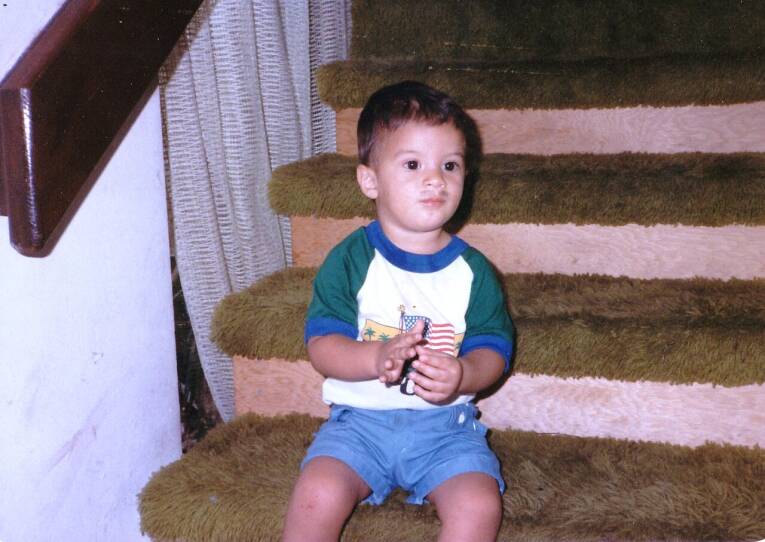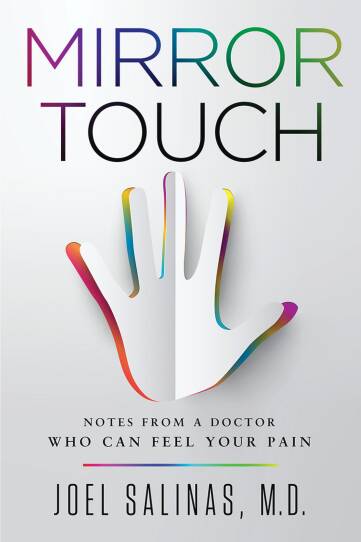When Dr. Joel Salinas was a kid, he didn’t just watch cartoons. He felt them.
“If I was watching Road Runner on TV, and while the coyote got hit by a truck, I would get hit by a truck … it was intense but also something that was really kind of engaging for me as a kid,” Salinas said.
He didn’t realize that he had the rare condition now termed "mirror touch synesthesia." What he saw others experience, he felt directly, as if it were happening to him. In school, Salinas would avoid fights — not just getting into them, but even witnessing them, because he’d feel every blow like it hit his own body.
“I knew there was something different about me but I just assumed I was a weird kid," he said.
Salinas is now an instructor of neurology at Massachusetts General Hospital, but he didn’t even know what synesthesia was until he was in medical school, when a friend mentioned there was a subset of people who see colors in sound, or feel emotions in numbers.

“For me, what I was most struck by was the fact that [he] even mentioned that as if it were exceptional," Salinas said. "So afterwards I asked him, 'I know you mentioned that, you know, that this was something bizarre, different. Doesn't everybody experience that?' And he looked at me like, ‘Nope, not at all.'”
Individuals with synesthesia experience a blending of different senses — sounds can have colors, tastes can have shapes, numbers may project emotions — there are many variations. In mirror touch synesthesia, sight and touch are co-mingled, but in such a way that what is seen happening to another body is perceived as happening to one’s own.
“Everybody has this mirror neuron system or mirror touch system in our brain that kind of perceives or simulates essentially what we see, especially with people in our own brain,” Dr. Salinas explained. It’s one of the reasons watching a realistic film can draw you in, why you wince in sympathy when the hero gets shot. He says studies have shown that the effect of feeling another’s pain is intensified if a person is close to us, like a friend or a relative — parents who have had a sick or injured kid know this well.
For mirror touch synesthetes, those mirror sensations can be overwhelming and overpowering, as Salinas learned the first time he saw a patient die.
He was still in medical school, observing in a hospital when a patient went into cardiac arrest.
“He ended up getting intubated, and throughout the whole process I felt like I was the one that was getting the compressions and having the tube kind of come down into my own throat," Salinas said. "And in that process of dying I almost felt like — like a sudden kind of slipping sensation in my own body. The best way that I can describe it is, it's like you're sitting in a room with an air conditioner going for several hours and suddenly the air conditioner just stops. There's that kind of eerie stillness.”
When it happened, Salinas had to leave the room to throw up — experiencing a man’s death was too intense. But over the years, he’s developed techniques to cope.
“If I'm in the middle of a medical emergency, I have to keep my bearings in focus and so that will mean that I have to focus on something that is inanimate and doesn't look like a facial expression or doesn't have any emotion to it, like a doorknob or a sleeve or a collar.”
Outside of medical emergencies, Salinas says there are times his synesthesia helps him clinically. By being so attuned to a patient’s every physical detail, he can notice patterns that could be elusive otherwise.
Recently, he was called to examine a patient with cerebral palsy who couldn’t speak. The woman had become combative, and Salinas was consulted in hopes the neurologist could recommend the right medication to settle her.

“But when I saw her, one of the things that struck me and I couldn't shake, was ... the subtle kind of sensation of rapid chest rising and falling that was mirrored in my own body, and kind of the mirrored contraction of my shoulder muscles — the specific muscles being the accessory muscles of respiration which are needed when you need to breathe in deeply," he said.
"And that sensation to me indicated that there was something else going on. And so I ended up recommending a special scan that ended up showing that she had blood clots in her lungs.”
Salinas says his instinct to identify with others also brings a deeper empathy that can connect him intimately with his patients.
Suzanne Hitchcock-Brian brought her mother-in-law to Salinas after her original doctor was unable to diagnose her Alzheimer’s disease. She says Salinas quickly got on her mother-in-law’s wavelength.
“He was so connected to my mother-in-law when we sat in the examining room, he stayed right with her," Hitchcock-Bryan said. "He kept looking at her. They had eye contact practically the whole time. And I have to tell you, she commented on that. She said, ‘I like the fact that he looked at me.’ Some people don't.”
Salinas says that while his nervous system might give him a leg up, this heightened empathy, just like the mirror neurons that underlie it, is not something exclusive to people like him. Sounding a little like a Buddhist monk, he says that empathy is something that can be strengthened with practice — and that might be a good idea.
“I mean, could you imagine what the world would be like if we didn't just think what it's like to be in [another] person's shoes but actually feel what it's like to be in their shoes?" Salinas said.
Joel Salinas’ book, “Mirror Touch: Notes from a Doctor Who Can Feel Your Pain,” is out this week.





